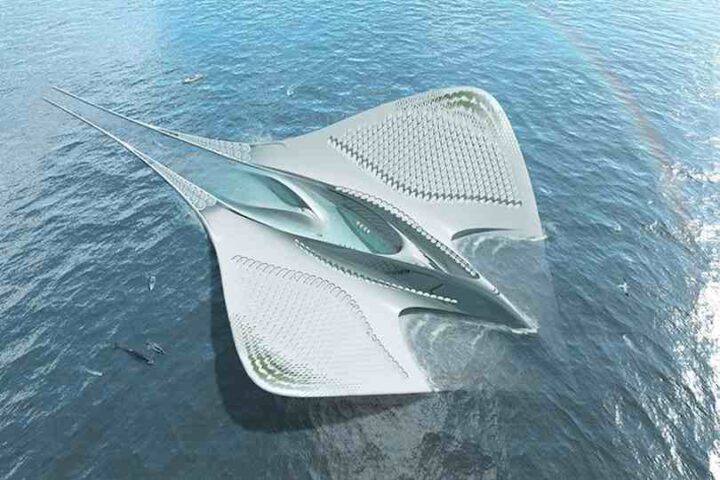The future study of oceanography and marine biology has materialized before us in the form of a giant Manta Ray. Designed by French architect Jaques Rougerie, ‘City of Meriens’ is a fully bionic research centre designed for use as as International Oceanographic University. As it drifts through the world’s oceans, the ship is expected to host 7,000 teachers, lecturers and students as they study and observe the biodiversity of marine life and ecosystems.
Measuring 900 by 500m in size, the centre comes complete with classrooms, leacture theatres, laboratories and accommodation, along with sports and leisure facilities, and contains space for other research vessels, as well as housing aquaculture breeding farms in its central lagoon, and hydroponic greenhouses in its wings. Moreover, it is designed to be completely self-sustaining, and plans to run on renewable marine energy making it a waste-free product.
Rougerie’s projects have always been synonymous with marine research. As a founding member of The Floating Oceanographic Laboratory Organisation, he last year launched the designs for his Sea Orbiter’s, 51m tall semi-submersible oceangoing vessels, 31m of which are submerged beneath the ocean’s surface.
‘Meriens’ is a term coined by Rougerie himself and translates as “one belonging to the sea”. During an interview with the French media, he stated that “I feel very, very good underwater. I feel different. Another type of imagination is awakened in me as soon as I am underwater”, a sentiment he plans to share with the 7,000 strong crew that will board his vessel when the project reaches completion sometime around 2050.
